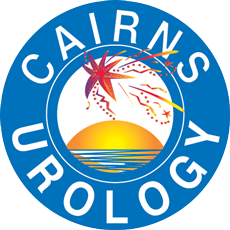






Kidney
The kidneys perform a vital function of filtering harmful and unwanted substances from the body. This is in the form of minerals dissolved in water which then passes along the ureters (tubes) into the bladder.
Diseases affecting the kidneys include infection, tumours - both non-cancerous and cancerous and stones (calculi). The specialty of Urology involves prevention, diagnosis and management of these conditions. Stones which are localised to the kidneys may be treated with extracorporeal shock wave lithotripsy (ESWL).
Kidney Stones
Stones (Calculi)
Kidney stones will affect 3 - 5% of the Australian population at some stage in their lives.
The presence of a kidney stone will cause severe pain, starting from the side to the region of the bladder and sometimes the genitals. This pain usually comes in waves and causes immense discomfort to the patient, sometimes resulting in nausea and vomitting.
It is important to confirm the diagnosis with investigations. During this time we ensure that the patient has pain relief and is consuming or receiving sufficient fluids by mouth or intravenously. Approximately 30% of stones will pass within 48 - 72 hours and a further 30% will pass within the next 7 days. The remainder do require removal.
Imaging
Usually a KUB (Kidneys, Ureters and Bladder) abdominal film plus a CT is carried out.
Stones tend to be held up in their progress at three positions:
1. The pelvi-ureteric junction (just leaving the kidney)
2. The portion of the ureter where it crosses over the common iliac vessels (lower abdomen)
3. At the opening of the ureter into the bladder
Treatment of kidney stones depends on their size and location. Stones in the kidney may be treated with Extracorporeal Shock Wave Lithotripsy (ESWL) where sound waves are used to break the stones into small fragments which are then passed out naturally. Alternatively, sometimes a telescope is passed through the back and into the kidney to remove them. That is called Percutaneous Nephro-Lithotomy (PCNL). In addition it is possible to pass a flexible telescope up through the bladder then the ureter (tube) to the kidney (Uretero-Pyeloscopy) and Laser the stones.
Stones in the upper ureter can receive ESWL but are more often treated with Uretero-pyeloscopy and those in the lower ureter with Ureteroscopy, disintegration and extraction.
read more on kidney stones and their treatments
If you would like to talk to someone about your particular symptoms you can speak in confidence with one of our staff: you can discuss any experiences and issues with us or feel free to call and make an appointment on 07 4041 0700
The kidneys perform a vital function of filtering harmful and unwanted substances from the body. This is in the form of minerals dissolved in water which then passes along the ureters (tubes) into the bladder.
Diseases affecting the kidneys include infection, tumours - both non-cancerous and cancerous and stones (calculi). The specialty of Urology involves prevention, diagnosis and management of these conditions. Stones which are localised to the kidneys may be treated with extracorporeal shock wave lithotripsy (ESWL).
Kidney Stones
Stones (Calculi)
Kidney stones will affect 3 - 5% of the Australian population at some stage in their lives.
The presence of a kidney stone will cause severe pain, starting from the side to the region of the bladder and sometimes the genitals. This pain usually comes in waves and causes immense discomfort to the patient, sometimes resulting in nausea and vomitting.
It is important to confirm the diagnosis with investigations. During this time we ensure that the patient has pain relief and is consuming or receiving sufficient fluids by mouth or intravenously. Approximately 30% of stones will pass within 48 - 72 hours and a further 30% will pass within the next 7 days. The remainder do require removal.
Imaging
Usually a KUB (Kidneys, Ureters and Bladder) abdominal film plus a CT is carried out.
Stones tend to be held up in their progress at three positions:
1. The pelvi-ureteric junction (just leaving the kidney)
2. The portion of the ureter where it crosses over the common iliac vessels (lower abdomen)
3. At the opening of the ureter into the bladder
Treatment of kidney stones depends on their size and location. Stones in the kidney may be treated with Extracorporeal Shock Wave Lithotripsy (ESWL) where sound waves are used to break the stones into small fragments which are then passed out naturally. Alternatively, sometimes a telescope is passed through the back and into the kidney to remove them. That is called Percutaneous Nephro-Lithotomy (PCNL). In addition it is possible to pass a flexible telescope up through the bladder then the ureter (tube) to the kidney (Uretero-Pyeloscopy) and Laser the stones.
Stones in the upper ureter can receive ESWL but are more often treated with Uretero-pyeloscopy and those in the lower ureter with Ureteroscopy, disintegration and extraction.
read more on kidney stones and their treatments
If you would like to talk to someone about your particular symptoms you can speak in confidence with one of our staff: you can discuss any experiences and issues with us or feel free to call and make an appointment on 07 4041 0700
